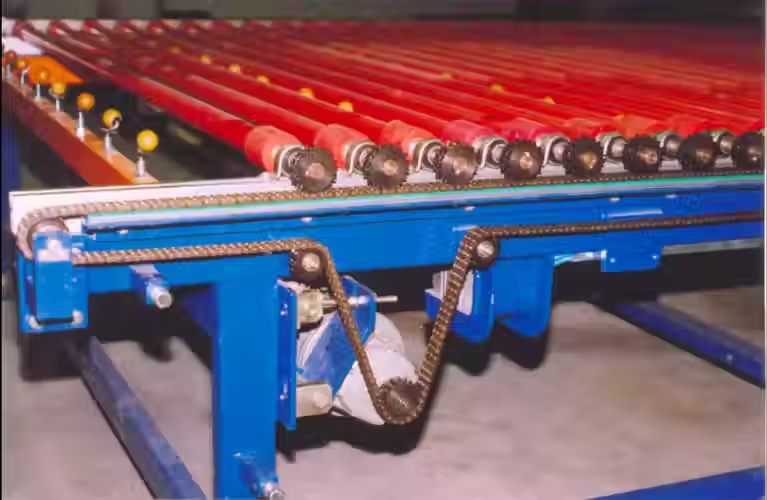Vibratory Feeder Manufacturers in Bangalore
- Jaswanth srinivas
- Oct 24, 2024
- 3 min read
Vibratory Feeder Manufacturers in Bangalore
A Vibratory Feeder Manufacturers in Bangalore is a mechanical device used to feed materials to a process or machine in a controlled manner. The manufacturing of vibratory feeders involves the integration of advanced engineering, precision machining, and cutting-edge automation technology to create systems that can efficiently and reliably move materials. These feeders are typically used in industries such as packaging, pharmaceuticals, food processing, mining, and material handling, where there is a need for smooth and continuous flow of materials.
Components of a Vibratory Feeder
Vibratory feeders consist of several key components:
Drive Unit: The heart of the system, usually powered by electromagnetic or mechanical drives, is responsible for generating the vibration. Electromagnetic vibratory feeders use magnetic forces to produce vibrations, while mechanical vibratory feeders rely on motor-driven eccentric weights.
Tray or Trough: The tray, also known as the bowl, is where materials are placed. The vibratory action causes materials to move along the tray in a controlled manner toward the discharge point.
Springs: These are crucial components that facilitate the vibratory motion. They absorb the vibrations generated by the drive unit and ensure that the motion is directed along the correct path.
Controllers: These provide the necessary adjustments to regulate the vibration frequency and amplitude, which directly impacts the feed rate. Advanced systems often incorporate microprocessor-based controllers for enhanced accuracy.
Manufacturing Process of Vibratory Feeders
Design and Engineering: Manufacturing begins with the design phase, where the feeder is custom-designed based on the specific application and material characteristics. Engineers take into account factors such as material size, flow rate, and the environment where the feeder will be used (e.g., wet or dry conditions, high temperatures, corrosive substances). Computer-aided design (CAD) software is typically used to model the feeder and ensure all parts meet exact specifications.
Material Selection: The choice of materials is essential for ensuring durability and long-term performance. Feeder trays are commonly made from stainless steel, which is corrosion-resistant and easy to clean, making it ideal for industries like food processing. For heavy-duty applications, high-strength materials like carbon steel are used.
Machining and Fabrication: After design, components are machined and fabricated. The tray or bowl is formed using techniques such as metal cutting, stamping, and welding. Precision is critical, as the shape and dimensions of the tray directly affect the material flow. The drive system, whether electromagnetic or mechanical, is assembled and calibrated to provide the desired vibratory motion.
Assembly: Once all components are ready, the vibratory feeder is assembled. The drive unit is attached to the tray, and springs are installed to facilitate the vibration. The entire assembly is then mounted on a base, which ensures stability and reduces noise.
Testing and Calibration: The feeder is subjected to a series of tests to ensure that it meets performance standards. Testing typically includes checking the feed rate, vibration amplitude, and frequency to confirm they align with the design specifications. Fine-tuning is often required to optimize the performance for specific materials and operating conditions.
Finishing and Coating: To protect the feeder from wear and tear, especially in harsh industrial environments, manufacturers often apply coatings or finishes. For example, feeders used in food and pharmaceutical industries may receive FDA-approved coatings to prevent contamination, while heavy-duty feeders may be treated with abrasion-resistant coatings.
Quality Control: Before the feeder is shipped to the customer, it undergoes a thorough quality control process to ensure that all components are functioning correctly and that the feeder will perform reliably in the field.
Technological Innovations in Vibratory Feeder Manufacturing
Recent innovations in vibratory feeder manufacturing include the integration of sensors and automation technologies. Sensors can be used to monitor material flow and adjust the feed rate automatically, while advanced controllers allow for more precise control of vibration. Additionally, modern vibratory feeders often feature modular designs, enabling easier maintenance and faster part replacement.
Applications
Vibratory feeders are versatile and widely used across various industries:
Food and Beverage: Used for feeding bulk ingredients such as sugar, grains, or spices in a controlled and hygienic manner.
Pharmaceuticals: Ensuring precise and contamination-free delivery of powders or capsules in pharmaceutical manufacturing.
Mining and Aggregates: Handling large, abrasive materials like ores and rocks.
Packaging: Feeding parts into packaging machines with high precision.
Conclusion
Vibratory Feeder Manufacturers in Bangalore involves complex engineering, precision fabrication, and stringent quality control processes. These feeders are essential components in many industrial applications due to their ability to handle materials in a controlled and efficient manner, reducing manual labor and enhancing overall production efficiency.




Comments